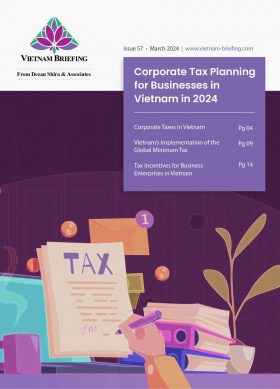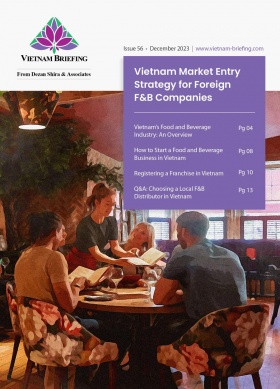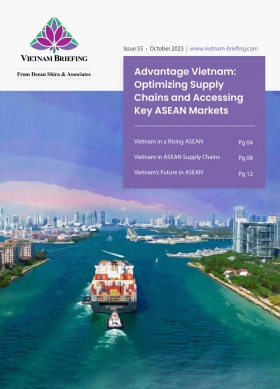Vietnam’s Imported Meat Market: Growth Drivers and Regulatory Requirements
Vietnam’s imported meat market is expanding driven by economic growth, rising consumption power, and changing dietary habits. This creates opportunities for foreign producers to provide high-quality and diversified meat products. We discuss the opportunity segments for meat exporters to Vietnam and key regulatory approvals.
Over the past decade, Vietnam has witnessed a remarkable increase in both income levels and population figures, driving a sharp surge in the demand for livestock products. From 3.5 million tonnes in 2013, meat consumption rose to 3.6 million tonnes by 2014. Projections indicate that Vietnam’s meat consumption is on track to reach 6.5 million tonnes by 2026.
This suggests that a growth trend will persist, with an anticipated 9.58 percent increase in meat consumption between 2024 and 2028. By 2028, the market volume is forecast to value US$16.06 billion.
The surge in demand has highlighted a significant gap: Vietnam’s domestic meat industry struggles to meet local needs, especially concerning beef and chicken production. Although pork production remains strong, shortages persist in beef and chicken supply due to various factors, such as geographical limitations, reliance on imported feeds, and complex farm structures and regulations.
This shortage in domestic production creates an opportunity for foreign meat producers to step in and address the growing demand.
Vietnam’s meat market: Growth drivers
Vietnam has witnessed a significant transformation in its dietary habits, marked by a notable increase in meat and animal product consumption. This shift can be attributed to several key drivers, reflecting the country’s economic, social, and cultural evolution. These include, among others:
- Economic growth and urbanization: Over the past three decades, Vietnam has undergone remarkable economic growth, transitioning from a nation facing food shortages to one with food abundance. As incomes rise and urbanization accelerates, Vietnamese consumers have greater purchasing power and access to a wider variety of food options, including meat and animal products.
- Increased affluence: With rising affluence, meat consumption is often perceived as a symbol of prosperity and progress.
- Globalization and trade agreements: Vietnam’s integration into the global economy has facilitated the importation of meat from various countries, including the United States and India.
- Changing food culture: Vietnamese consumers’ food practices have evolved, with meat becoming an integral part of their diet in diverse ways. The proliferation of high-end steak houses and the popularity of Japanese and Korean-style BBQ joints reflect changing culinary preferences and a growing appetite for meat-centric dining experiences. Similarly, when dining outside, fast food chains, street kitchens, and restaurants offer convenient and meat-heavy options, catering to consumers’ preferences for meat-centric meals.
Vietnam’s meat import landscape
Along with Vietnam’s surging appetite for meat, there have been shifts in the country’s meat import landscape.
In 2023, Vietnam reportedly imported over 716,000 tonnes of meat and meat products, valued at a staggering US$1.43 billion. Although there was a slight dip in overall import value compared to the previous year, the volume of imports notably increased, signaling a growing demand among Vietnamese consumers.
One visible trend is the diversification of meat suppliers. Vietnam now sources products from 37 different markets, a departure from its reliance on a few key suppliers. India has emerged as an important player, contributing nearly 30 percent of total meat imports. Australia also remains a major supplier, underlining the global nature of Vietnam’s meat procurement network.
By looking at the country’s beef import segment, for example, both India and Australia stand out as the top suppliers, with India alone accounting for 76 percent of imports. Both countries have seen their market shares grow, driven by factors such as post-pandemic demand recovery and tariff eliminations under trade agreements.
Recent import data further highlights the market’s dynamics. In January 2024, Vietnam experienced a considerable surge in meat imports, with expenditures reaching US$127.52 million for nearly 62,440 tonnes of products. This marked a substantial increase of over 76 percent in volume and 72 percent in value compared to the same period in 2023. Notably, imports from India saw a drastic uptick, with volumes soaring by 184.9 percent and values by 190.7 percent year-on-year.
Product preferences
Recent statistics reveal that Vietnam has ascended to become one of the top 10 nations globally in terms of pork consumption.
Frozen pork items are predominantly imported to Vietnam from five key sources: Russia, Brazil, Canada, the US, and Poland. It is expected that frozen pork products will maintain a significant portion of the market, with an anticipated growth from 5.5 percent to 6 percent CAGR over the next five years.
Meanwhile, Vietnam sources beef and beef cattle from diverse origins, including the United States, Australia, Canada, Japan, New Zealand, Hong Kong, and India. Analysts note that Indian imports predominantly consist of buffalo meat, while beef from Hong Kong is largely re-exported to various destinations.
Despite being priced higher than local beef, imported beef is preferred by Vietnamese consumers for its tenderness, juiciness, quality preservation, and traceability. It is prominently retailed in supermarket chains, restaurants, and hotels, contrasting with domestic beef, which is typically found in traditional markets and local eateries.
Trade Data Monitor, LLC reports a significant surge in beef imports into Vietnam, averaging a 24 percent increase since 2018, culminating in a 2022 figure of US$335 million—an impressive 24 percent rise from 2021. Throughout the years, Australia, Canada, the United States, and the European Union have remained major beef exporters to Vietnam.
Emerging consumer trends: A taste for premium and organic products
Vietnam’s middle class is experiencing rapid expansion, ranking among the world’s seventh fastest-growing segments. Projections suggest that by 2030, this group will swell by approximately 36 million individuals. With rising incomes and evolving dietary preferences, this burgeoning middle class is becoming increasingly discerning in their food choices.
As incomes rise and dietary habits evolve, there’s a noticeable uptick in consumer demand for products offering higher quality, enhanced health benefits, and improved sustainability. Moreover, consumers are showing a growing interest in food sourced from reliable and sustainable origins. The aftermath of the pandemic has further amplified this trend, with consumers displaying heightened interest in natural and organic products.
Many individuals are now willing to prioritize spending on products perceived as healthy, natural, and fresh, even at the expense of other expenditures. This shift in consumer behavior has spurred the emergence of innovative product offerings, such as “banana-fed pigs” marketed under the brand Bapi HAG, “vegetarian pork” sold as BaF Meat, or “herbal pork” under the brand SagriFood.
Entering Vietnam’s meat market: Regulatory requirements and compliance FAQs
Who are the competent authorities?
While the Ministry of Agriculture and Rural Development (MARD) typically oversees the management of most meat and meat products, according to Decree No. 15/2018/ND-CP of the Government: Detailing the Implementation of a Number of Articles of the Law on Food Safety, certain types of meat products might fall under the supervision of other departments like the Ministry of Health (MOH) or Vietnam Directorate of Market Surveillance under Ministry of Industry and Trade (MOIT).
Generally speaking, MARD is responsible for the management of the following product categories:
- Fresh, chilled and frozen meat (carcasses, cuts, slices, pellets, etc.);
- Edible meat offal of livestock and poultry (viscera, bones, legs, neck, wings, fat, blood, etc.);
- Products made from livestock and poultry meat and edible offal (dried smoked, canned, heated, salted, gelatin, etc.), excluding functional food under the management of the MOG; and
- Homogenized preparations of meat (Chinese sausage, hot dog, salami, grilled chopped meat, ham, etc.), excluding products in cake form under the management of the MOIT.
The MARD also conducts inspection, quarantine, and risk assessment processes.
What are the requirements for Vietnam market access?
Foreign producers intending to export meat products to Vietnam must first confirm that their exporting country has obtained approval for meat exports to Vietnam, as stipulated by Decree No. 15/2018/ND-CP of the Government: Detailing the Implementation of a Number of Articles of the Law on Food Safety. This requirement aims to verify the eligibility of the food safety control system in the exporting country.
Meat importers must also confirm whether both the producers and exporting country are included in the list of permitted exporters to Vietnam. The list of permitted exporting countries and manufacturers with relevant products can be found here.
Notably, if exporting countries or producers are not included in Vietnam’s list of permitted exporters and aim to trade terrestrial animal products, they must submit an application to MARD. This application should detail a list of manufacturers and products intended for import. MARD will then conduct inspections and provide the results.
It’s important to note that processed or prepackaged foods are exempt from these requirements.
What are the permitted and prohibited products?
Regulations governing permitted and prohibited products are crucial. As detailed earlier, enterprises are only authorized to export products that are registered on the approved list to Vietnam. Any additions to the export list require approval from MARD.
Prohibited products include:
- Animal products listed in Appendix I of the Convention on International Trade in Endangered Species of Wild Fauna and Flora (CITES);
- Products derived from endangered, precious, or rare animals; and
- Item listed in Appendix II of Decree 69/2018/ND-CP stipulating specific articles of the Law on Foreign Trade Management.
What are the regulations for prepackaged meat products?
Traders are required to complete self-declarations for prepackaged and processed meat products as per Decree No. 15/2018/ND-CP (partially amended by Decree No. 155/2018/ND-CP). This involves submitting a dossier for self-declaration of conformity to the competent authority, along with the necessary materials outlined in the decree. Once approved, traders are authorized to manufacture and sell the product, assuming full responsibility for its safety.
Specific steps are as follows:
- Food traders submit a dossier for self-declaration of product conformity to the competent authority.
- The competent authority reviews the dossier. If complete and compliant, they upload the product information to their public system. If not satisfactory, the dossier is returned for correction.
- The food trader announces the declared dossier at their company’s headquarters, uploads it to their website, or publishes it on mass media.
- Upon self-declaration on the health system, the supplier can proceed to manufacture and sell the product, assuming full responsibility for its safety.
Moreover, food trading establishments in Vietnam, particularly those dealing with aquatic food, must obtain a Certificate of Satisfaction of Food Safety Conditions from the MARD, unless certain exemptions apply as specified by law. This certificate ensures compliance with regulations outlined in Vietnam’s Law on Food Safety.
What are the required inspection and quarantine steps?
Below is the information detailing the inspection and quarantine process for meat products imported into Vietnam, along with the necessary licenses and procedures involved at each stage.
|
Inspection and Quarantine for Importing Meat Products in Vietnam |
|
|
Process |
Details |
|
Pre-Import Risk Analysis |
|
|
Quarantine |
|
|
State Inspection on Food Safety |
|
Each shipment must be accompanied by a certificate issued by the competent authority of the exporting country, confirming compliance with food safety regulations. However, processed or prepackaged foods are exempt from this requirement, as stipulated in Articles 14 and 18 of Decree 15/2018/ND-CP.
What are the key regulations overseeing food product safety?
All food products imported in Vietnam must adhere to various regulations to ensure general food safety standards. These regulations include (but are not limited to):
- Food Safety Law 2010
- Law No. 79/2015/QH13 on Veterinary
- Decree No. 15/2018/ND-CP of the Government: Detailing the Implementation of a Number of Articles of the Law on Food Safety (partly amended by Decree 155/2018/ND-CP)
- Decree No. 43/2017/ND-CP on Goods Labels (which was further amended by Decree No. 111/2021/ND-CP)
- Circular No. 05/2019/TT-BKHCN
Additionally, specialized regulations for specific products and safety and hygiene requirements must also be considered.
Conclusion
In conclusion, Vietnam presents a compelling opportunity for businesses looking to export meat products. With a rapidly expanding middle class and evolving consumer preferences towards higher quality, healthier, and sustainably sourced foods, the Vietnamese market offers a promising avenue for growth and expansion.
However, navigating the export process to Vietnam requires careful attention to detail and adherence to local regulations. Ensuring compliance with the list of permitted meat products for export, verifying eligibility to export to Vietnam, and engaging with experienced import services are essential steps to facilitate the process and ensure compliance.
Additionally, for foreign exporters, considering models such as exporters to food processors or exporters to local importers/distributors can streamline the entry process into Vietnam’s meat sector. Partnering with local importers, who possess established distribution networks and understand local market nuances, can facilitate market penetration, and enhance competitiveness in Vietnam’s increasingly competitive meat market.
About Us
Vietnam Briefing is one of five regional publications under the Asia Briefing brand. It is supported by Dezan Shira & Associates, a pan-Asia, multi-disciplinary professional services firm that assists foreign investors throughout Asia, including through offices in Hanoi, Ho Chi Minh City, and Da Nang in Vietnam. Dezan Shira & Associates also maintains offices or has alliance partners assisting foreign investors in China, Hong Kong SAR, Indonesia, Singapore, Malaysia, Mongolia, Dubai (UAE), Japan, South Korea, Nepal, The Philippines, Sri Lanka, Thailand, Italy, Germany, Bangladesh, Australia, United States, and United Kingdom and Ireland.
For a complimentary subscription to Vietnam Briefing’s content products, please click here. For support with establishing a business in Vietnam or for assistance in analyzing and entering markets, please contact the firm at vietnam@dezshira.com or visit us at www.dezshira.com
- Previous Article UNDP Releases Vietnam PAPI 2023 Report: Progress on Anti-Corruption, E-Governance
- Next Article Understanding How Trademark Opposition Works in Vietnam








